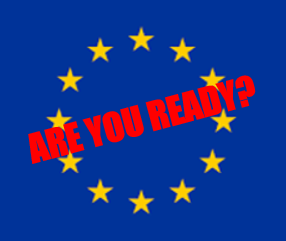With new data protection laws on the way, UK businesses have run out of excuses, writes Jason Hart, CTO, Gemalto
Ever since the vote to leave  the EU last year, it’s been unclear how much, if any, of the incoming GDPR legislation would be applied in the UK. Thankfully, the government has taken this on board, and today revealed plans to improve our current data protection legislation.
the EU last year, it’s been unclear how much, if any, of the incoming GDPR legislation would be applied in the UK. Thankfully, the government has taken this on board, and today revealed plans to improve our current data protection legislation.
This updated law aims to:
- Transfer the European Union’s current General Data Protection Regulation into UK law
- Grant the UK’s data protection watchdog new powers to levy bigger fines on firms that break laws
- Give UK citizens more control over what happens to their personal information, such as asking for personal data posted when they were children to be deleted
This overhaul of UK data protection law is a big step towards updating the country’s approach to cybersecurity. By putting control of their personal data back in the hands of consumers, the pressure is on for businesses to ensure they are adhering to data protection laws. Those that don’t risk losing consumer trust.
Incorporating the incoming GDPR legislation into UK law is an important step, as it will dispel any uncertainty businesses had around its fate post-Brexit. With the deadline for compliance fast approaching, there is now no reason for UK businesses not to be moving towards meeting these data protection laws.
Six steps every business should undertake ahead of GDPR
While it’s all well and good talking about compliance, it’s another thing entirely to understand the steps a business must take to work towards it. So, what does a business need to do, to ensure it’s protecting the data it holds? Below are six steps every business should undertake on its journey towards GDPR compliance.
Step one – Get to grips with GDPR’s legal framework
The first step that any business needs to take is to understand how each aspect of the legislation apply to them. By conducting a full audit against the GDPR legal framework, a business will need to understand what it needs to do and what the consequences for failing to do so are. As part of this compliance audit, a business should hire a Data Protection Officer (DPO), who will be responsible for ensuring the company adheres to the regulations. Ideally, a DPO would have a background in both law and technology, so they’re able to understand both the technical specifications and the regulatory framework needed to meet this. Every organisation is different, and so no GDPR journey will look the same – correct guidance from business leaders to employees is needed ensure the whole company understands how to be compliant.
Step two – Create a Data Register
Once a business understands the steps they need to take, it’s important that they keep a record of the process. This is best done with a Data Register – essentially a GDPR diary. The Data Protection Association (DPA) of each country will enforce GDPR, and be responsible for judging if a business is compliant when determining any penalties for being breached. In this event, the Data Register will be a crucial tool for demonstrating the progress the affected business has made in becoming compliant. If they have no proof, the DPA would be able to fine between 2% and 4% of the company’s turnover. The amount and speed of the DPA’s decision would depend on the sensitivity of the data.
Step three – Classify data
While understanding what protections, if any, are already in place is important, this step focuses on helping businesses understand what data they need to protect and how that is being done. First, a business must locate any Personal Identifiable Information – information that can directly or indirectly identify someone – of EU citizens. It’s crucial to know where this is stored, who can access it, who it has been shared with etc. It can then determine which data is more vital to protect. In addition to this, it’s important to know who is responsible for controlling and processing the data, and making sure all the correct contracts are in place.
Step four – Identify the top priorities
Next, a business needs to evaluate how that classified data is being produced and protected. Regardless of how data is collected, the first priority should always be to protect the user’s privacy. Businesses should ask themselves if they need the sensitive data they have collected – this data is worth a lot to a hacker, and has the greatest risk of being stolen. Businesses should complete a Privacy Impact Assessment and Data Protection Impact Assessment of all security policies. When doing this, it’s important to keep the rights of EU citizens in mind, including restrictions of processing and data portability. In particular, any data third parties use to identify someone must be deleted if requested by that individual and approved by the EU. It’s crucial that all this data is correctly and promptly destroyed and can’t be accessed. This process is known as the “right to be forgotten”.
Evaluating how the business protects this data comes next (for example, with encryption, tokenisation or psuedonymisation). The evaluation must explore: any historical data, the data being produced and any data that is backed up – either on-site or in the cloud. This data must be anonymised to protect the privacy and identities of the citizens it relates to. All data needs to be protected from the day it is generated to the day it is not needed.
Step five – Document and assess any additional risks and processes
Of course, there’s more to compliance than just protecting the most sensitive data – the next stage of the process is to assess and document any other risks, to discover any other processes or areas that might be vulnerable. While doing this, the business should update its Data Register, to show the DPA how they are addressing any existing risks. Only by doing this can a business demonstrate to the DPA that it is treating compliance and data protection seriously and with respect.
Step six – Revisit and repeat
Finally, the last step on the compliance journey focuses on revisiting the outcome of the previous steps and remediating any potential consequences, tweaking and updating where necessary. Once this is complete, businesses should evaluate their next priorities and repeat the process from step four.
The basis of this new data protection bill and GDPR is to push businesses into action and start putting security at the top of the agenda. When next May comes around, businesses won’t be able to hide anymore. It’s vital to start making the preparations for compliance now, before it’s too late. It’s not a case of if, but when, a breach occurs and that revelation could cause serious damage to their reputation. Not only this, but businesses will also face severe fines. With just a year to go, there are no longer any excuses for businesses when it comes to protecting their customers data.
What can you do to prepare for the emerging GDPR requirements? Read Preparing for the General Data Protection Regulation.
Stay tuned for Alex Hanway’s series, A Deeper Dive Into GDPR.


